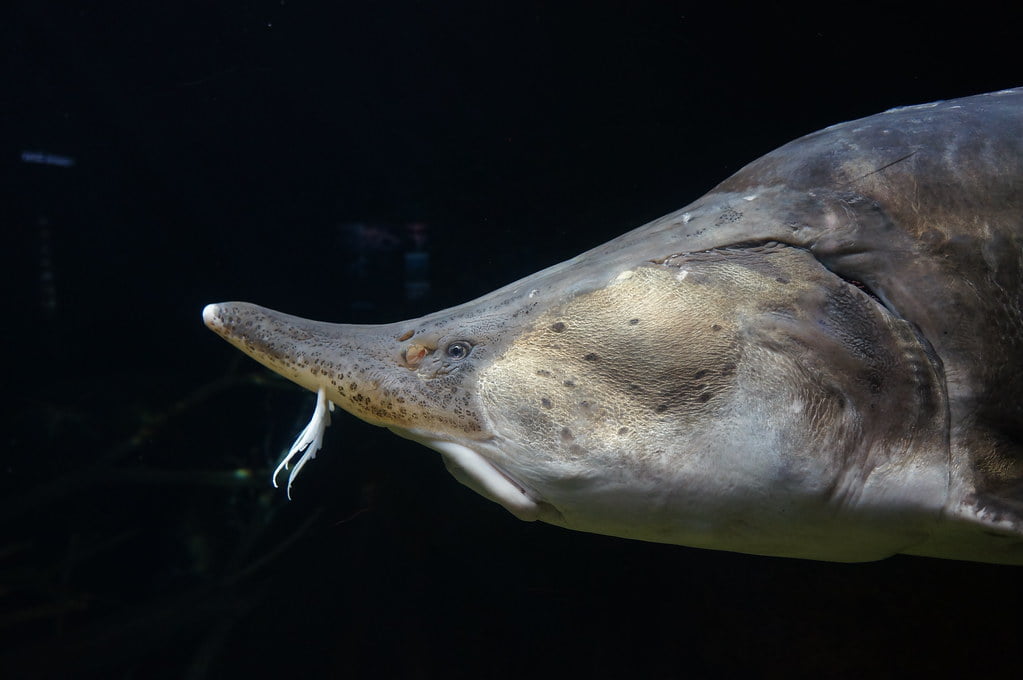Introduction-
Immerse yourself in the height of luxury as we discover the mystery surrounding Beluga caviar. This delicious dish, renowned for its unique taste and rarity, guarantees an extraordinary gastronomic experience. Come along on a journey to learn about the history, characteristics and unique flavor profile of beluga caviar in this blog article.

Origins and Rarity-
The magnificent beluga sturgeon, which inhabits most of the Caspian and Black Seas, is the source of valuable beluga caviar. The largest and most sought-after caviar eggs are produced by this sturgeon, famous for its enormous size, which makes beluga caviar a unique and invaluable culinary delicacy.
Appearance and Texture-
This caviar has distinctive large shiny pearls and a distinctive texture that easily tempts the palate. The eggs, which range in color from light to dark brown, have a delicious creamy texture that melts easily in the mouth. Get ready for a unique gastronomic experience that is supreme.
Flavor Profile-
Richness, creaminess and a slight nuttiness are the main characteristics of beluga caviar’s flavor profile, which is further enhanced by the slight note of saltiness from the water. A symphony of flavors that lingers long after the last pearl is enjoyed, each mouthful is a sensory treat. The complex flavor is a reflection of both the care used in the preparation of the caviar and the sturgeon’s natural environment.

Culinary Pairings-
Beluga caviar enhances cooking skills and goes well with a variety of dishes. Its mild flavor, often eaten with blinis or gently toasted bread, provides a blank canvas for imaginative complements. Every complement, from crème fraîche to finely chopped onions, enhances the caviar experience. Try it with some chilled vodka or Champagne for the ultimate decadence.
Harvesting and Sustainability-
Recognizing that overfishing is endangering beluga sturgeon stocks, the caviar business has adopted sustainable practices. Aquaculture is one of the ethical harvesting techniques used to protect the Beluga sturgeon species and ensure the survival of this gastronomic miracle.
The Symbol of Luxury-
Beyond just being a food, beluga caviar has come to represent luxury and refined taste. Its reputation as the pinnacle of luxury has been strengthened by its associations with the aristocracy and upscale restaurants. Beluga caviar turns every dining occasion into a luxurious affair, whether enjoyed at a private function or at home.

Conclusion-
Unveiling the Beluga Caviar encourages you to experience the richness and heritage that lies within each priceless pearl as we conclude our research. Enjoy the symphony of flavors and embrace the uniqueness that characterizes this wonderful delicacy to create a lasting culinary experience.
Table of Contents
FAQ’S-
Where does beluga caviar come from?

The source of beluga caviar is the beluga sturgeon (Huso huso), a type of sturgeon that lives mostly in the Black Sea and Caspian Sea basins. Known for producing the largest and most sought-after caviar eggs of all sturgeon species, these huge, long-lived fish can reach several hundred kilograms.
The Black Sea and Caspian Sea were once home to large populations of beluga sturgeon. Unfortunately, beluga sturgeon populations have declined drastically due to overfishing, habitat loss, and poaching. As a result the beluga sturgeon is currently considered an endangered species, and global initiatives have been taken to control and manage its conservation.
Roe, or eggs, are harvested from the ovaries of female beluga sturgeon to make beluga caviar. After processing, the caviar is ready to eat. Aquaculture and ethical caviar harvesting methods have become more popular in the caviar business as a way to solve conservation problems and promote sustainability. Beluga sturgeon populations need to be protected, and this gorgeous treat will remain available for a long time.
What is beluga caviar?

Beluga caviar is a type of caviar that comes from the roe (eggs) of the beluga sturgeon (Husso husso), a large and ancient species of sturgeon found in the Caspian and Black Sea basins. The Beluga sturgeon is famous for its enormous size, and can weigh several hundred kilograms, making it one of the largest freshwater fish in the world.
Caviar obtained from beluga sturgeon is highly prized for its large, shiny eggs, which range in color from light to dark brown. These eggs are known for their delicate texture and flavor profile that is often described as rich, creamy and nutty, with a subtle hint of saltiness reminiscent of the sturgeon’s natural habitat.
Beluga caviar is considered one of the most luxurious and expensive types of caviar due to several factors including the rarity of the beluga sturgeon, the slow maturation of the fish, and the size of the eggs. Traditionally associated with high-end dining and gastronomic experiences, beluga caviar is often served on blinis or lightly toasted bread, sometimes with condiments such as crème fraîche, chopped chives, or finely chopped onion.
Due to overfishing and the resulting decline in beluga sturgeon populations, efforts have been made to promote sustainable caviar production through aquaculture and ethical harvesting practices, with the aim of preserving the species and providing beluga caviar for future generations. To ensure availability.
Why is beluga caviar so expensive?

Beluga caviar is expensive due to the rarity and slow maturation of the beluga sturgeon, the large size of the caviar eggs, labor-intensive harvesting processes, conservation efforts, and the high demand of the luxury market for this particular delicacy.

